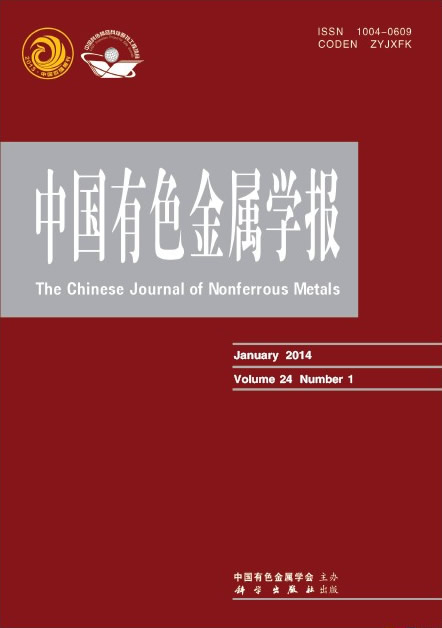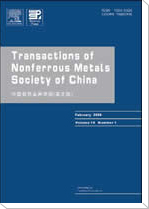显微硬度的影响
(广东工业大学 材料与能源学院, 广州 510006)
摘 要: 用铜模吸铸法制备直径2~3 mm的Cu60-xZr30Ti10M2 (M=Mg、 Al、 Sn)系列非晶合金。 用X射线衍射、 差式扫描量热仪和硬度实验等研究它们的非晶形成能力、 热稳定性与显微硬度。 该系列非晶合金均表现出两级晶化行为。 Cu60Zr30Ti10的玻璃转变温度为426.5 ℃, 晶化起始温度为467.7 ℃, 过冷液相区为41.2 ℃。 添加Mg、 Mo、 Al对过冷液相区影响比较小, 而添加Sn则使过冷液相区明显增大, 达到51.6 ℃, 合金的非晶形成能力有较明显提高, 热稳定性增强。 Cu60Zr30Ti10非晶合金的显微硬度为HV594.3, 添加2%(摩尔分数)的Mg、 Mo和Al对显微硬度影响不大, 而添加2%Sn(摩尔分数)却使显微硬度达到HV755.7, 提高27%。
关键字: Cu60-xZr30Ti10M2合金; 块体非晶合金; 非晶形成能力; 显微硬度
(Faculty of Materials and Energy, Guangdong University of Technology, Guangzhou 510006, China)
Abstract: A series of bulk amorphous alloys Cu60-xZr30Ti10M2 (M=Mg, Mo, Al, Sn) with a diameter within 2 to 3 mm can be produced by copper mould sucking cast. The glass forming ability, thermal stability and microhardness were investigated using X-ray diffractometer, differential scanning calorimeter and microhardness tester. All Cu60-xZr30Ti10M2 amorphous alloys show a two-stage crystallization behavior. For amorphous alloy Cu60Zr30Ti10, the glass transition temperature is 426.5 ℃, the onset of crystallization temperature Tx is 467.7 ℃, the super-cooled region ΔTx is 41.2 ℃. The introduction of Mg, Mo and Al has relatively small influence on ΔTx, whereas the introduction of Sn can enhance ΔTx from 41.2 ℃ to 51.6 ℃, indicating that the glass forming ability is improved and the thermal stability is also increased. The microhardness of Cu60Zr30Ti10 is HV594.3, and the introduction of 2% (mole fraction) alloying elements, namely Mg, Mo and Al, plays no apparent influence on the microhardness, however, the introduction of 2%Sn (mole fraction) can markedly increase the microhardness by 27% to HV755.7.
Key words: Cu60-xZr30Ti10M2(M=Mg, Mo, Sn, Al) alloy; bulk amorphous alloy; glass forming ability; microhardness


